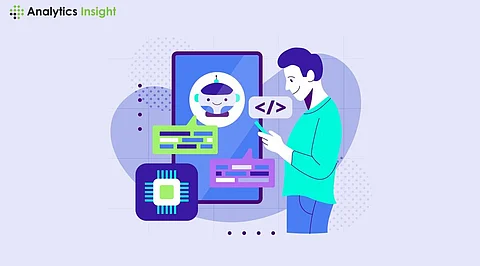

No-code AI platforms, the newest addition to this fast-evolving technological landscape, are transforming things in 2025. The ability of such platforms to help businesses and individuals build AI-driven applications and workflows without extensive programming knowledge has given birth to new AI capabilities and streamlined development cycles for non-technical users. But every innovation, after all, has its pros and cons, along with specific use cases.
Accessibility for Non-Developers: No-code AI platforms reduce the barrier to entry, allowing non-technical professionals to tap into AI capabilities. Business analysts, marketers, and managers can design intelligent workflows without relying on software developers.
Faster Development: Building AI applications traditionally requires months of development. No-code platforms drastically reduce the process to weeks or even days, facilitating rapid prototyping and deployment.
Cost-Effectiveness: It reduces the need for specialized AI engineers and expensive coding resources, thus saving businesses money. Small organizations, startups, and freelancers benefit much from these cost savings.
Customization and Flexibility: Many no-code platforms have drag-and-drop interfaces, pre-built templates, and integration options with other tools, making customization straightforward and intuitive.
Scalability: No-code platforms often include cloud-based infrastructures that allow businesses to scale their applications seamlessly as their data and user base grows.
Limited Customization for Complex Tasks: While no-code tools are excellent for basic and intermediate applications, they may fall short when handling highly complex or specific AI models requiring extensive customization.
Vendor Lock-In: Most no-code AI platforms are based on a subscription model, thereby making a dependency on a specific vendor's ecosystem. Migrating to another platform is complicated and expensive.
Data Privacy Concerns: Using third-party no-code AI platforms brings about data security issues and compliances with global privacy standards, such as GDPR and CCPA.
Performance Limitations: The predefined templates and limited capabilities in coding can be a performance-limiting factor, particularly in large-scale applications of AI models.
Dependency on Platform Updates: Users depend on platform providers for updates, new features, and bug fixes, which may not always align with their immediate needs.
Customer Service Automation: This is how businesses use no-code AI to create chatbots and virtual assistants to handle customer queries, streamline support, and elevate user experience.
Predictive Analytics: Companies use no-code platforms to predict market trends, customer behavior, and inventory requirements so that the decision-making processes can be optimized.
Content Creation: Marketing teams design AI tools for generating personalized content, social media posts, and advertisements suited to target audiences.
Healthcare Services: Healthcare practitioners develop applications for patient management, symptom assessment, and remote monitoring through no-code AI.
Education and Training: No-code AI includes the digital transformation of adaptive learning systems for custom-tailoring each needed student's requirement and personal feedback.
In 2025, no-code AI platforms continue to bridge the gap between technology and business needs, offering much growth and innovation. However, businesses should weigh the pros and cons of using these platforms and ensure they align with their strategic goals. It has been great that they democratized AI and speed its development. Still, organizations' more advanced requirements require hybrid solutions, no-code tools, and traditional programming.
With the unlocking of the power of AI for all, no-code platforms are reshaping industries and making AI-driven innovation more inclusive than ever.
